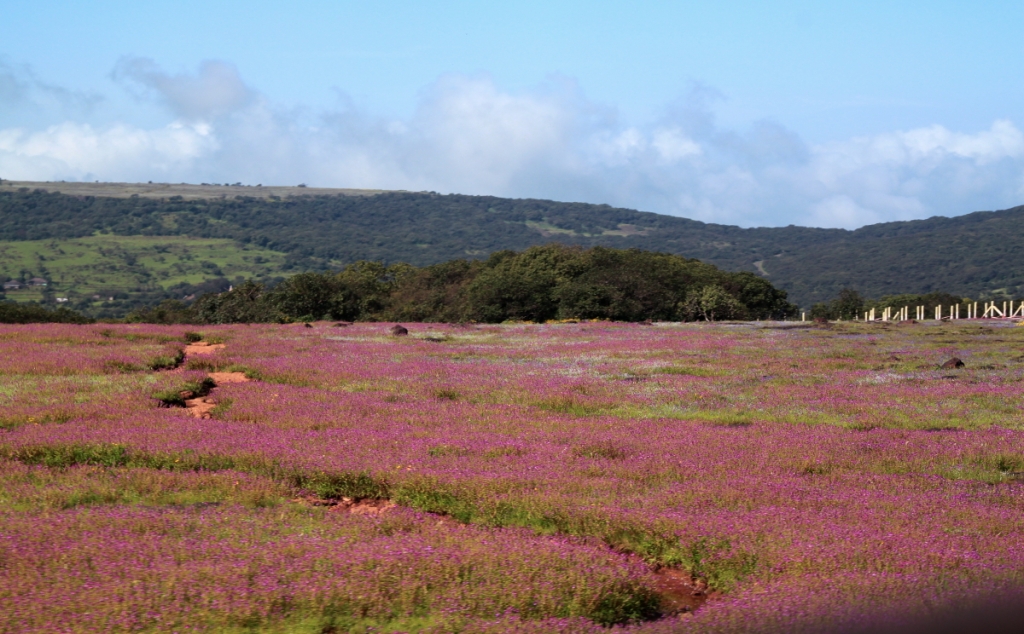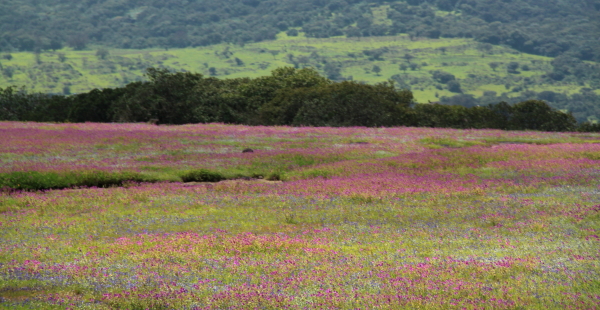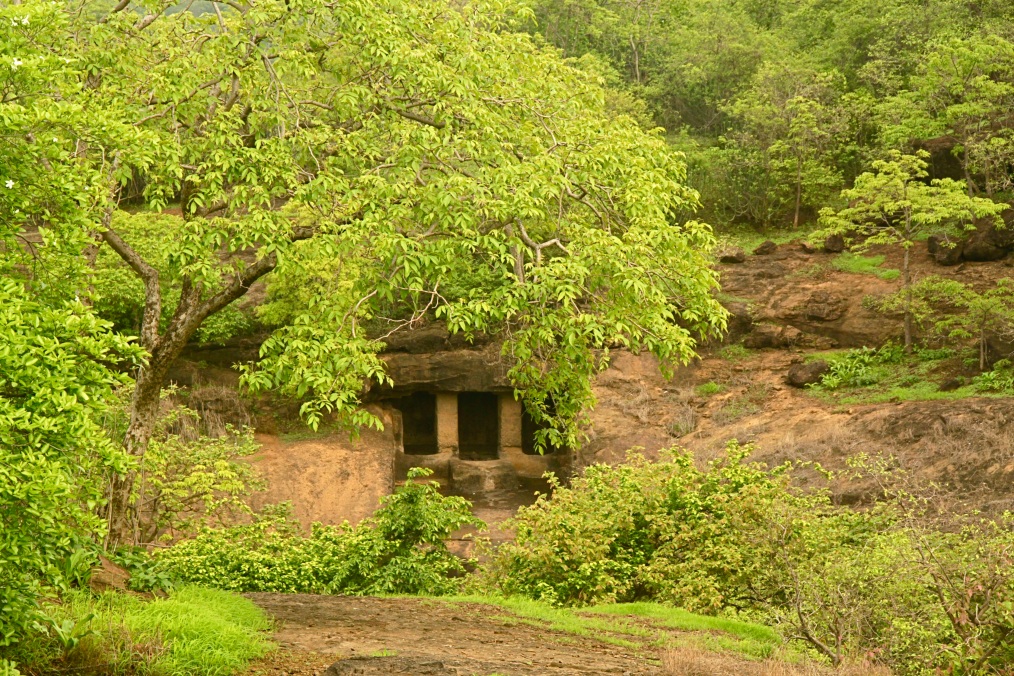
Pink Flowers in Kaas
I first read about Kaas in the in-flight travel magazine of Jet Airways on a flight just after I had moved back to India. The article spoke rapturously about a place in the Western Ghats where, at the end of every monsoon, little flowers bloomed with such profusion that all one could behold was carpets of colour. The colours would change every week, or with the rain. I made up my mind on the flight that if I ever ended up in Mumbai at the right time of the year, I would go to Kaas.
Fate has a strange way of making wishes come true. Two years later, I was working in Mumbai. My wife came across a web site run by a wonderful organization called the Bombay Natural History Society (www.bnhs.org). BNHS was organizing two fully guided tours of Kaas just after the monsoon. We signed up for the second guided tour at the end of September.
Timing is very important, so it’s important to track the fading of the monsoon. Typically, early – mid September is the right time to go. But in 2012, the monsoon was considerably delayed. I was pointed to a Kaas website run by the govt of Maharashtra Forest division to register for a visit. The website worked as often as a cool shower in a desert (it’s a lot better now). When I finally got access to it, I called the contact numbers listed on the site. The persons on the other end were very helpful and informed me that the best time to visit, given the late monsoon, would be end of September. We lucked out.
Kaas is a tabletop, a plateau, overlooking the town of Satara in Maharashtra. There is no place to stay in Kaas. The closest town one can stay in is Satara, a typical small Indian township, at the foothills of Kaas. Satara is a 5 hour drive from Mumbai. Perhaps because the flowering is a seasonal event that lasts just a month, Kaas / Satara still remain relatively obscure. As a result, there are neither any tourist trappings nor any tourist amenities in Satara. The best hotels on offer are 2 star calibre. You could label a few as 3 star but it would be a stretch. If you’re looking for a comfortable stay, it might be better to stay in nearby Wai or Panchgani. Be prepared to drive an extra 30 – 45 minutes to Satara, and then add another 45 minutes to get to Kaas from Satara.

The view of Satara valley on the way to Kaas
It’s a lovely drive up the mountains from Satara to Kaas. There are no indications, not even the tiniest hint, of what awaits in Kaas as one drives up. All one sees are green mountain sides, valleys, lakes, the Venna river, and flat green tabletops. There are some picturesque lodges, including one that looked haunted, and a few dhaba-style restaurants along the hillsides.

Mickey Mouse Flowers
As one gets closer to Kaas, the flowers start to show on adjoining tabletops. The good thing about going with BNHS was that our trip guide knew when to stop and explain the intricacies of the flowers to us. We stopped en-route to see the famed “Mickey Mouse” flowers as well as lesser known flowers such as the lantern flower.
You know you’re there when you hit the last tea stall and restaurant at a makeshift entrance onto the Kaas plateau. There’s a car park to leave your car behind at the entrance and walk the last 2 or so kilometers.

The Lantern Flower
If you have a driver or are in a bus, you can get dropped off at the very entrance and save yourself the walk. It’s a healthy walk amidst greenery, so there’s nothing saved by not walking it. Unless there’s rain (it’s the last vestiges of monsoon, remember?) or time is of the essence.
At the entrance, the forest officials will charge you a nominal entry fee, and an additional fee if you are carrying a camera. The area has been recently fenced off to protect the flowers from being picked and destroyed by passers by. It was unfortunate, but once inside, visitors were blissfully squashing the flowers in their attempt to get a Bollywood like photograph while laying down amid a bed of flowers. Children happily plucked flowers while the parents watched on, unmindful of large signs prohibiting the plucking of flowers.
The carpets of flowers are truly a sight to behold. The flowers are tiny. One should not expect a field of sunflowers or lilies in Kaas. However, there is such a large bounty of these little flowers that size truly does not matter. In fact, the small size creates the illusion of a finely weaved carpet, somewhat like a finely pixelated image.

At the Kaas Table top
Pink flowers, blue flowers, yellow flowers, white flowers, embroidered by lush green grass, and an occasional tree. Wherever we turned, that’s all we could see. The first afternoon was cloudy, but the next morning was bright and sunny. Thanks to the changing sky, we got to see Kaas in two completely contrasting moods. On the first day, the colours of the flowers stood out against a dark broody sky. On the second day, the flowers shone with delight, as they soaked in the daylight.
From the table top, we went down the other side to a serene beautiful lake. Here too were unique flowers along the shores. Not weaved into carpets, but sticking to trees and branches like little necklaces. As we reached the lake side, the scenery was of a kind that could have been anywhere. It could have been the US, or the UK, or Europe. I felt like I had seen this lake side many times in many countries. Pure, calm, serene. It was the temple that was the give away and brought the mind back to India.

Kaas Lake (temple on the other side)
The lake was large and we drove from one end to the other. At the other end, people had parked their motorbikes right by the lake and jumped in for a swim. It was the perfect thing to do on a warm sunny day. We were not swimsuit prepared and so all we could was vicariously enjoy the water before we headed back to Mumbai.
Kaas is often called Maharashtra’s equivalent of the Himalayan Valley of Flowers. It’s a lazy comparison. Kaas is not a valley, it’s a flat top of a mountain. The flowers are seasonal and tiny. Yet Nature remains unconditionally generous, offering the same beauty and healing to all, regardless of whether the “all” treat Nature with respect or disregard.
You can see more Kaas photos on my Flickr page.



















